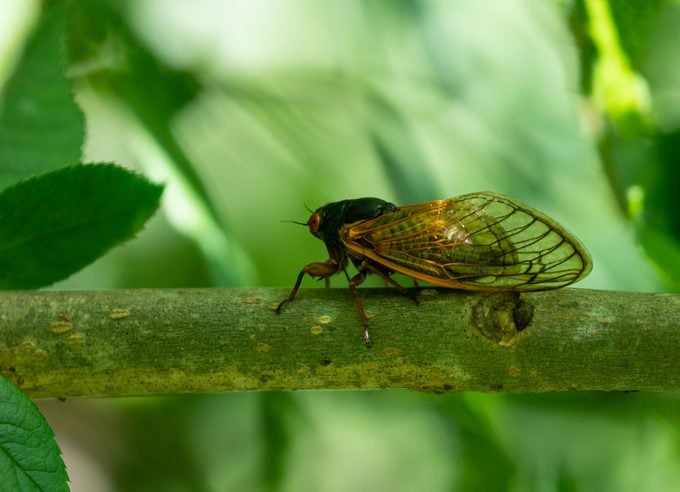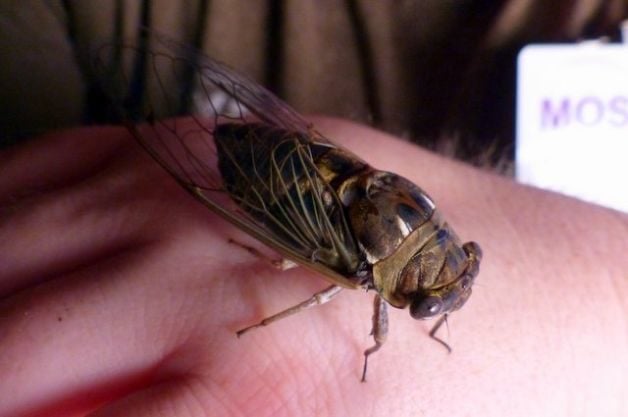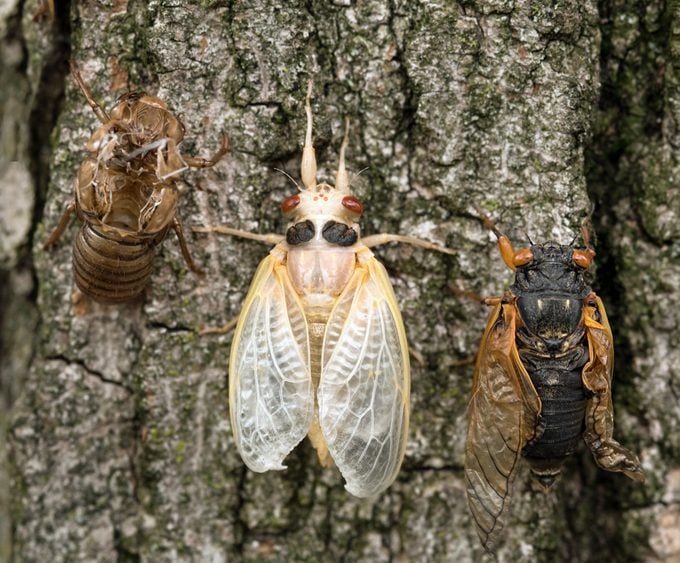Annual and Periodical Cicadas: What You Should Know
Updated: Jan. 17, 2023
The "Brood X" periodical cicadas emerged this past spring, but annual cicadas are present every year. Learn about both types of cicadas.

While standing outside talking on the phone the other day, I had to momentarily pause the conversation. The cicada singing overhead was just too loud for me to hear the person on the other end! The “Brood X” periodical cicadas emerged earlier this spring in many places in the Eastern U.S. But now the dog day cicadas, or annual cicadas, are here, announcing the later days of summer with their usual noisy confidence. You may not realize that cicadas are present every year, just about everywhere. In fact, nearly 200 kinds of annual cicadas are found in North America alone.
Quiz: How many types of caterpillars can you identify?

What Is a Cicada?
All cicadas are insects that undergo what’s known as hemimetaboly, or incomplete metamorphosis. When you think of metamorphosis, you probably think of butterflies and their cycle of egg, larva (caterpillar), pupa (chrysalis), and adult. Cicadas skip the pupal stage. Their larval stage, when they’re known as nymphs, is spent mostly underground. So most people only see cicadas in their adult form, or find their exuvia, the shed skin they leave behind when they molt to that form. (How’s that for a lot of big science words!)
Discover why birds molt and how to spot it.

Difference Between Annual and Periodical Cicadas
Cicadas lay their eggs on the tips of tree branches. The hatched larvae fall to the ground, where they burrow beneath the soil and suck the sap from roots of trees. The difference between periodical cicadas and annual cicadas is the amount of time they spend feeding as nymphs below ground. Annual cicadas spend about 2 years eating underground. Adults emerge every year for mating. Periodical cicadas eat and grow for either 13 or 17 years, depending on the species. All periodical cicadas emerge at more or less the same time in those years, usually in late spring. This behavior, known as predator saturation, is actually form of defense against the many creatures that consider cicadas a tasty snack. When so many cicadas emerge all at once, each individual cicada is less likely to be gobbled up by a hungry bird or raccoon.
See what a sphinx moth caterpillar and pupa looks like.
Why Do Cicadas Make So Much Noise?
Cicada songs are performed by males to find mates. Their unbelievably loud buzzing (up to 120 decibels, about the same as a chainsaw) is produced by a structure on their exoskeleton called a tymbal. Essentially, they click the tymbal back and forth at increasingly fast speeds. Their abdomens are nearly hollow, serving only to amplify that sound so much it can sometimes be heard a mile away. Male cicadas actually have the ability to disable their “ears” (called tympana) so they don’t cause themselves to go deaf!
For a more musical melody, check out the top songbirds in America.
Are Cicadas Dangerous?
Cicadas are harmless to humans, even if their loud singing is sometimes a nuisance. They don’t generally do any lasting damage to trees, although some tip browning and wilting may occur when eggs are laid. Their abundance, whether annually or periodically, make them an important part of the food chain. Many birds include cicadas as an important part of their diets as they prepare for fall migration. Some birding experts and scientists wonder if the emergence of the “Brood X” periodical cicadas this spring may be related to a mystery wild bird disease.
Discover the beneficial insects you want to see in your garden.
